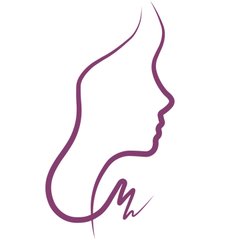
Lip augmentation has become increasingly popular and trendy in recent years, driven by the desire for fuller, more defined lips. Both, for aesthetic purposes or to offset the natural thinning that occurs with age, lip augmentation offers a variety of answers.
This article explores what lip augmentation is, the different types of treatments available, their benefits, potential side effects, and what to expect before undergoing the procedure.
Lip augmentation can be any kind of cosmetic procedure designed to enhance the volume, shape, and structure of your lips. These procedures most popularly involve injectable fillers, but they can also mean implants or surgical methods. The goal of each procedure aims to create a more youthful, attractive appearance or to correct asymmetries and other aesthetical imperfections.
Dermal Fillers: The most common method, involving injectable substances that add volume to the lips. The most popular fillers are made from hyaluronic acid (HA), a substance naturally found in the body that helps to retain moisture and create a plump appearance. Popular HA fillers include Juvederm and Restylane. Fat Grafting: This procedure involves removing fat from another part of the body, purifying it, and then injecting it into the lips. This method is often considered more natural since it uses the patient’s own tissue. Lip Implants: For those seeking a more permanent solution, lip implants made of silicone or other materials that are not harmful to living tissue can be inserted into the lips. This method requires surgical intervention but provides long-lasting results. Lip Lift: A surgical procedure that shortens the distance between the nose and the top of the lip, increasing the amount of pink lip that is visible. This can create a more youthful and fuller appearance without adding volume. Laser Lip Augmentation: This method uses laser energy to stimulate collagen production in the lips, providing a fuller appearance over time. It is less invasive than fillers or implants and can offer subtle, natural-looking results.
The longevity of lip augmentation depends on the method used: Dermal Fillers: Typically last between 6 to 12 months. Your body will gradually absorb the hyaluronic acid, so it is necessary to have periodic touch-ups to maintain the desired look. Fat Grafting: Results can last several years, but not all the injected fat cells survive, so multiple sessions may be needed. Lip Implants: Provide a permanent solution but may require adjustment or replacement over time. Lip Lift and Laser Augmentation: Both methods offer longer-lasting results, with lip lifts being permanent and laser treatments needing periodic maintenance sessions to sustain collagen production.
Ideal candidates for lip augmentation include individuals who: - Have naturally thin lips or have experienced thinning due to aging. - Desire fuller lips for aesthetic reasons. - Have asymmetrical lips that they wish to correct. - Are in good overall health. However, lip augmentation may not be suitable for those with: - Active oral infections or conditions like herpes. - Certain chronic illnesses or autoimmune diseases. - A history of severe allergic reactions, particularly to substances used in fillers.
Preparation for lip augmentation involves several steps to ensure a safe and successful procedure: 1. Consultation: Schedule a consultation with a cosmetic professional/aesthetic physician to discuss goals, options, and potential risks. 2. Medical History: Provide a detailed medical history, including any allergies, medications, and past surgeries. This helps the provider determine the most suitable augmentation method. 3. Avoid Certain Medications: Refrain from taking blood-thinning medications, such as aspirin or ibuprofen, for at least a week before the procedure to minimize bruising and bleeding. 4. Stop Smoking: If you smoke, it’s advisable to stop several weeks before and after the procedure to promote better healing and results. 5. Follow Pre-Procedure Instructions: Your provider may give specific instructions, such as avoiding alcohol and certain skincare products, to ensure optimal outcomes.
Lip augmentation offers various options to achieve fuller, more youthful lips, each with its own benefits and longevity. From temporary fillers to permanent implants, individuals can choose the method that best suits their needs and lifestyle. Proper preparation and understanding of the potential side effects are crucial for achieving the best results. Consulting with a qualified professional ensures a safe procedure tailored to individual goals, helping to enhance one’s natural beauty effectively.


